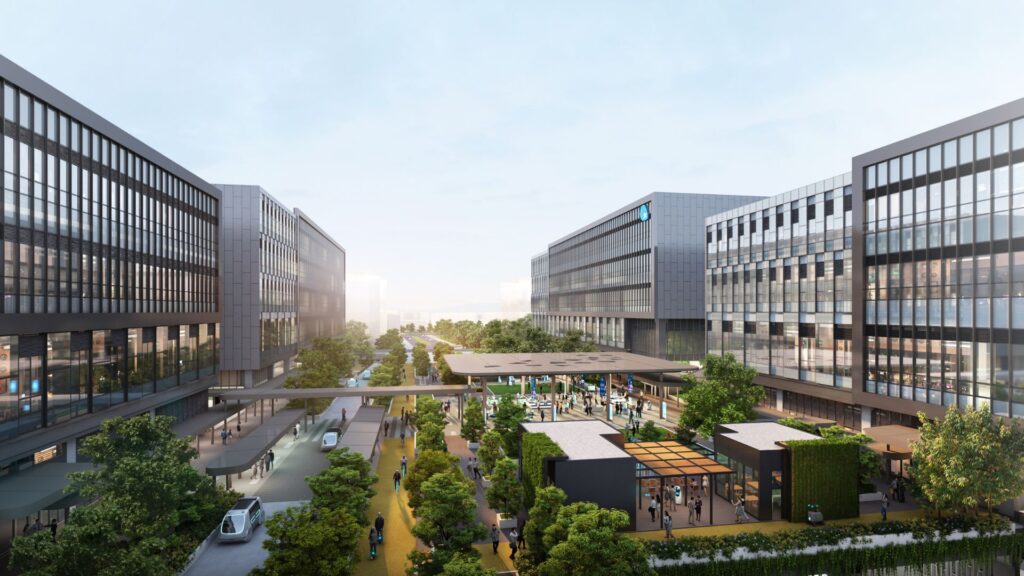The Evolution of Industrial Space
Throughout human history, we have seen how physical spaces shape the trajectory of our species. Singapore’s industrial landscape has undergone a remarkable metamorphosis, transitioning from traditional factories to integrated industrial ecosystems. According to the Singapore Economic Development Board, the manufacturing sector contributed 21.4% to Singapore’s GDP in 2024, underscoring the critical role of industrial infrastructure in the nation’s economy.
Beyond Traditional Manufacturing
What sets modern industrial developments apart from their predecessors is their approach to integration and sustainability. Consider these transformative elements:
- Advanced Manufacturing Clusters: These spaces foster collaboration between different sectors, creating synergies that would have been impossible in traditional industrial settings. They house everything from biotech research facilities to precision engineering workshops, all interconnected through digital infrastructure.
- Smart Building Management: By incorporating artificial intelligence and IoT sensors, these facilities reduce energy consumption by up to 30% compared to conventional industrial buildings, according to Singapore’s Building and Construction Authority.
- Human-Centric Design: Unlike the dehumanising factories of the Industrial Revolution, modern industrial spaces prioritise worker wellbeing through biophilic design, natural lighting, and communal areas that promote interaction and innovation.
The Digital Industrial Revolution
We are witnessing what historians of the future might call the Fourth Industrial Revolution’s physical manifestation. The Singapore Smart Industry Readiness Index reveals that 82% of local manufacturers are accelerating their digital transformation efforts. This shift represents more than mere technological adoption; it signifies a fundamental change in how we conceive industrial spaces.
Sustainability: The New Industrial Imperative
The industrial sector of tomorrow must address one of humanity’s greatest challenges: environmental sustainability. Singapore’s Green Plan 2030 sets ambitious targets for industrial energy efficiency, and modern industrial developments are leading this charge. The implementation of:
- Solar energy systems that can generate up to 5 megawatts of clean energy per facility
- Rainwater harvesting systems that reduce water consumption by 40%
- Green building materials that lower the carbon footprint by 25% during construction
These initiatives demonstrate how industrial spaces are evolving from environmental liabilities to sustainability champions.
The Social Dimension
Perhaps the most fascinating aspect of modern industrial development is its impact on human social structures. The integration of work and community spaces creates new forms of social organisation that would have been unthinkable in previous generations. Statistics from the Urban Redevelopment Authority show that integrated industrial developments increase workforce productivity by 23% through improved social interaction and reduced commuting times.
Looking Ahead: The Future of Industrial Space
As we project ourselves into the future, we must consider how industrial spaces will continue to evolve. The Singapore Manufacturing Federation projects that by 2030, over 50% of industrial jobs will require advanced digital skills. This transformation suggests that industrial spaces must become increasingly adaptable and technologically sophisticated.
The integration of artificial intelligence, robotics, and human creativity will define the next phase of industrial development. We are moving towards what might be called ‘conscious industrial spaces’ – environments that can learn, adapt, and respond to the needs of their occupants in real-time.
Conclusion
The industrial revolution that began in 18th-century Britain transformed human society irrevocably. Today, we stand at the threshold of an equally momentous transformation. The future of industrial development lies not in isolated factories but in integrated ecosystems that blur the lines between work, innovation, and community, exemplified by the pioneering approach of JTC Industrial.
